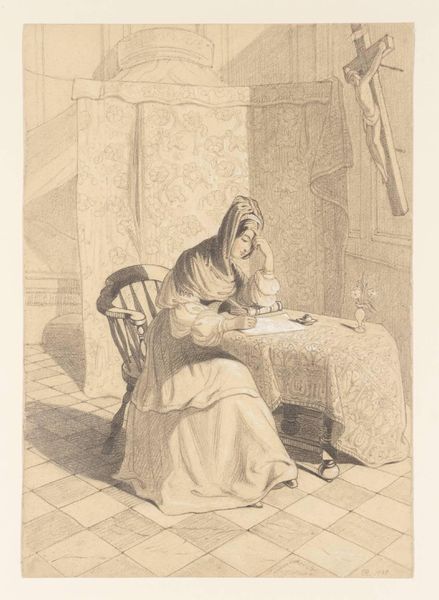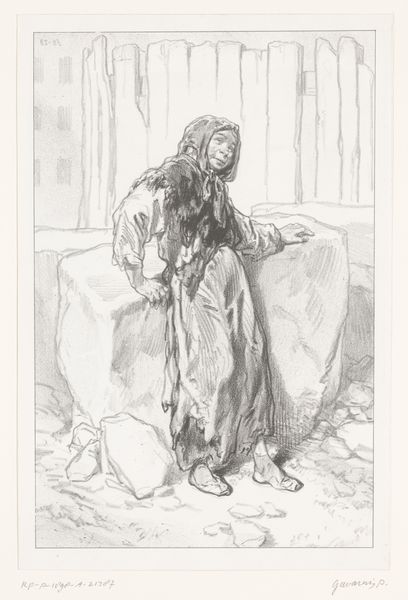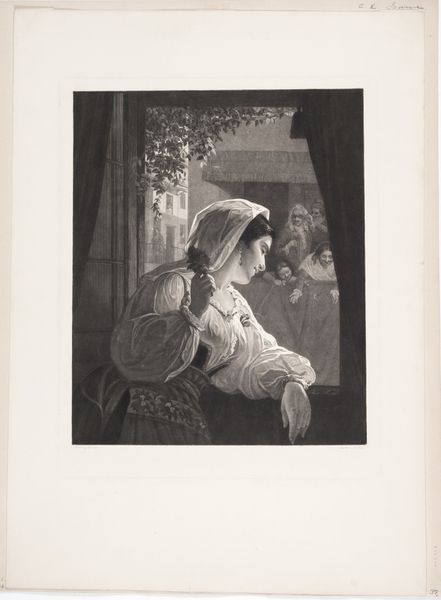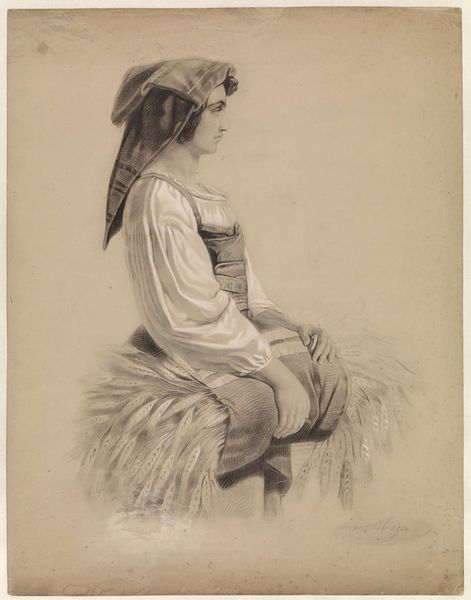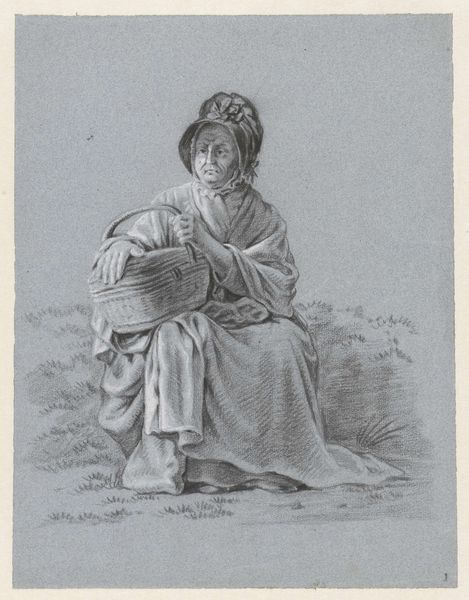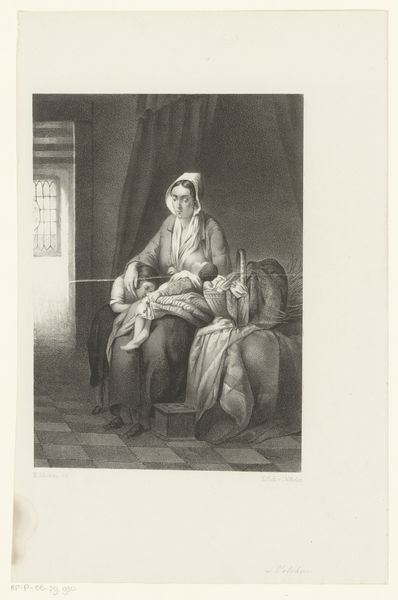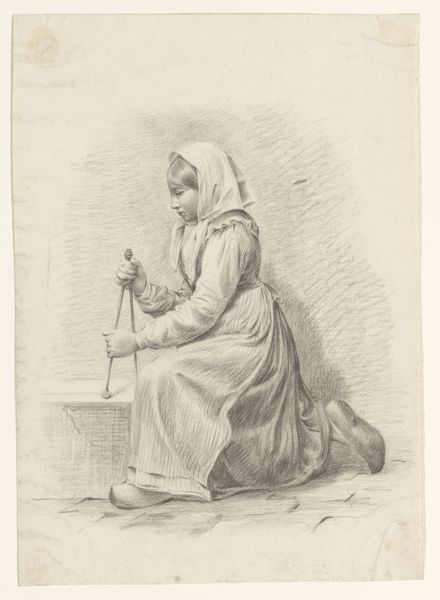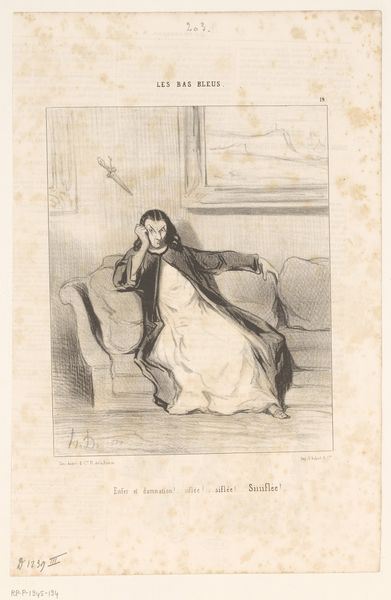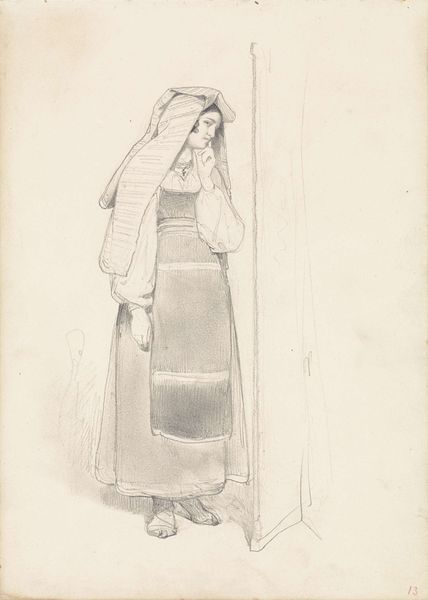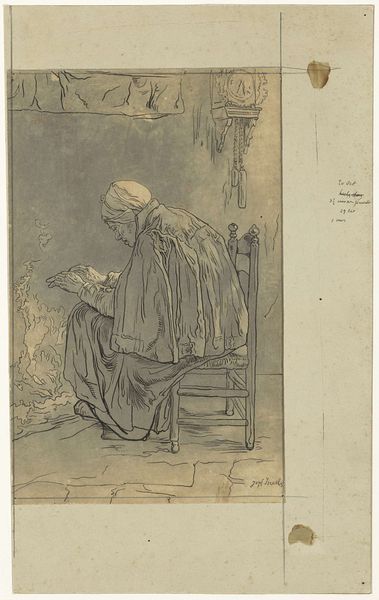
drawing, pencil
#
drawing
#
16_19th-century
#
pencil sketch
#
charcoal drawing
#
pencil drawing
#
sketch
#
romanticism
#
pencil
#
orientalism
#
19th century
#
pencil work
#
academic-art
#
sitting
Copyright: Public domain
Curator: This evocative work is titled “Captive Greek Girl,” rendered in 1838 by John Frederick Lewis, primarily in pencil. Editor: The first word that comes to mind is ‘melancholy.’ There's such a profound sense of stillness, a quiet sadness emanating from the girl's downcast gaze and the subtle gradations of grey. It feels almost cinematic in its captured emotion. Curator: Lewis was deeply engaged with Orientalism, a fascination with the “East” that was popular in the 19th century. Works like this reflect an era marked by European colonialism and the construction of the “Orient” as exotic and subservient. How do you read that in the image itself? Editor: The composition is carefully constructed, placing the figure within a traditionally ‘eastern’ setting, including a decorative background wall, a latticed window reminiscent of a harem screen and placing her on cushions on the floor, emphasizing her perceived otherness. However, the girl’s positioning between shadow and light makes me think about ideas of forced visibility. Is she presented as a decorative object, to be looked upon? How is her captivity being staged by the artist, for the public's presumed pleasure or interest? Curator: The art market of the time definitely rewarded depictions that played into such fantasies. Lewis, along with artists like Ingres and Delacroix, participated in a market driven by the projection of European desires and assumptions onto these cultures and persons. This work also embodies Romanticism’s fascination with emotions, especially those related to suffering. Editor: Absolutely, but whose suffering are we truly seeing, and who benefits from it being represented? There's a power dynamic at play that we can’t ignore. The very title 'Captive' casts her into a specific role, depriving her of her agency, her voice, her complex identity. Curator: By focusing attention on its social context, and especially its market context, we can move past just admiring its artistic merits. Editor: Exactly. What the work says about Western colonial attitudes and power structures remains relevant today, even though it may have simply appealed to period expectations at the time of its execution. Curator: Reflecting on our conversation, I think it’s a strong reminder that visual delight does not exist in a vacuum and to view such pieces within its political background helps create a more robust critique. Editor: It is important to highlight how these artistic expressions can uphold ideologies and structures of inequality, allowing viewers to critically engage with artworks that they may appreciate artistically but, at the same time, approach in a very careful way.
Comments
No comments
Be the first to comment and join the conversation on the ultimate creative platform.

